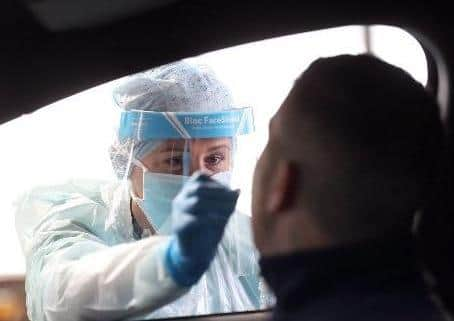COVID rate drop in South Inishowen
and live on Freeview channel 276
Latest data published last night shows that there have been 86 cases confirmed in the Buncrana LEA, which takes in all of south Inishowen, over the fortnight to November 16.
This is 34 less than the 120 cases reported in the previous fortnightly figures.
Advertisement
Hide AdAdvertisement
Hide AdThe new figures resulted in a 14 day incidence rate - the national and international yard stick by which rates are measured and areas compared - of 384.5 cases per 100,000 people for the period from November 3 to November 16.


This is a significant reduction on the previous Buncrana LEA case rate of 536.5 per 100,000 for the period of October 27 to November 9.
The South Inishowen / Buncrana LEA, which has a population of 22,366 people, however still has a rate more than triple that of the national rate of 121.3 cases per 100,000 people, although the downward trajectory is sizeable and will be welcomed.
Moving northward to the Carndonagh LEA, which takes in all of north Inishowen and has a population of 16,964 people, the number of cases rose slightly with 59 confirmed COVID-19 cases over the fortnight compared to 53 in last week’s figures.
Advertisement
Hide AdAdvertisement
Hide AdCorrespondingly, the rate was more than double that of the national average.
The 14 day profile for North Inishowen up to November 16 showed that the rate was 347.8 per 100,000 people - up slightly on the previous rate of 312.4 cases per 100,000 people.
The national rate per 100,000 in the Republic has fallen slightly.
Meanwhile across the border in Derry the rate has risen slightly after falling dramatically over recent weeks.
Advertisement
Hide AdAdvertisement
Hide AdBetween November 12 and November 18 there were 333 coronavirus cases in Derry/Strabane giving a rate of 221 per 100,000, up from 209.7 on Wednesday. The rate is now significantly above the average for the north (180.7).